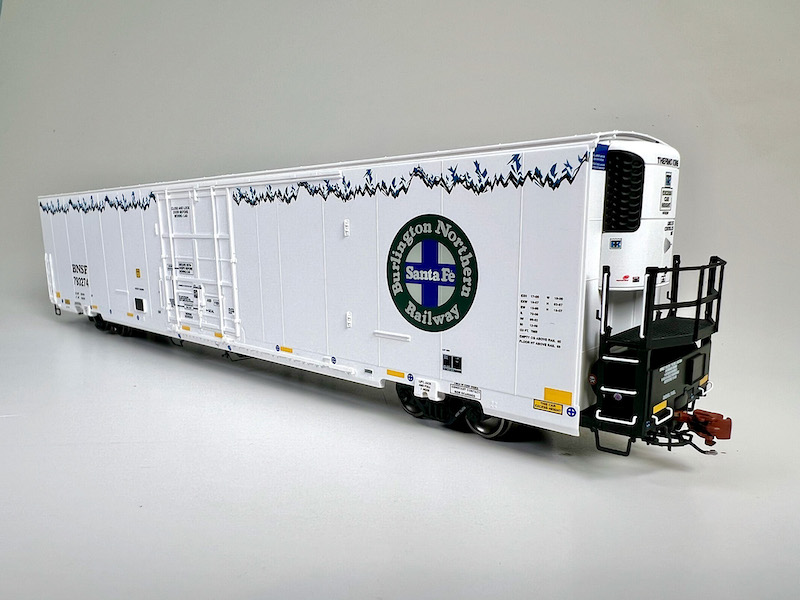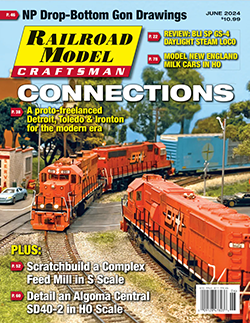By Harry K. Wong
With an aging fleet of 57’ mechanical refrigerator cars dating back to the late 1960s due for retirement, BNSF Railway looked to Trinity Railcar to construct a new fleet of modern mechanical reefers. In 2001, Trinity built 810 reefers in the first group, followed by a second order in 2003. Cars from both groups measured 82’ long and 17’ tall. Another 250 cars were built for J.R. Simplot with JRSX reporting marks. These modern reefers handle perishable commodities like meat, vegetables, fruits, and frozen food and can be found in almost any manifest train across North America.
Responding to the wishes of contemporary modelers, ScaleTrains is now producing HO scale Trinity 82’ refrigerator cars as part of its premium “Rivet Counter” series. The subjects for this review are three examples of these boxy reefers from ScaleTrains’ first release, which depict the first 810 cars delivered to the railroad in 2001 with a 7,883 cu. ft. interior cargo capacity. Each model captures details specific to each road number of the prototype. These details include either smooth or ribbed rooflines, fuel tank variations, two side door types, intricate underbody detail, separate lower door tracks and more.
Depending upon the road number of its prototype, three different versions of refrigeration units are offered including Thermo King (early), Thermo King (late), and Carrier. Sound-equipped versions take electricity from the rails to power a speaker circuit augmented with a capacitor. Sound versions also feature an LED-lighted control panel on each end-mounted refrigeration unit. The illuminated reefer controls are a first for HO Scale.

Each Trinity reefer also features separately applied ladders, door rods, a brake wheel, an etched metal crossover platform, full underbody brake rigging, train line air hose assemblies and metal lower-shelf knuckle couplers without magnetic trip pins. All details exude a fine delicate appearance with scale or near-scale cross sections throughout the model. While the brake rods are made of durable wire, the air hoses underneath the draft gear assemblies are molded in stiff styrene which can fall victim to inadvertent handling.
On the scales, each of our sound-equipped cars weighs 6.4 ounces, which is precisely in compliance with NMRA’s Recommended Practices for car weight. 36” machined metal wheelsets with separate rotating bearing caps are installed in Barber S-2 trucks underneath. While the coupler height was in full conformance with our Kadee #206 height gauge, replacing the stock couplers can be challenging due to the delicate airhose assembly that must be gently nudged aside to access the screw for the draft gear cover. On the rails, the cars performed well whether entrained, or during switch moves in the yard. All lettering is crisply reproduced and in proper registration, right down to the instruction markings on each plug door.
DCC is not necessary nor needed for sound or lighting adjustments. Instead, once the car is on energized rails (whether analog DC or DCC), sound and lighting can simply be activated by placing three fingers or the palm of your hand on the roof over the center door. The backlit control panel on the refrigeration unit will illuminate with a subtle glow, followed by sound. The capacitor circuit within provides constant sound and lighting over short electrical gaps. That said, be aware that the sound will eventually cycle on and off like the prototype.





